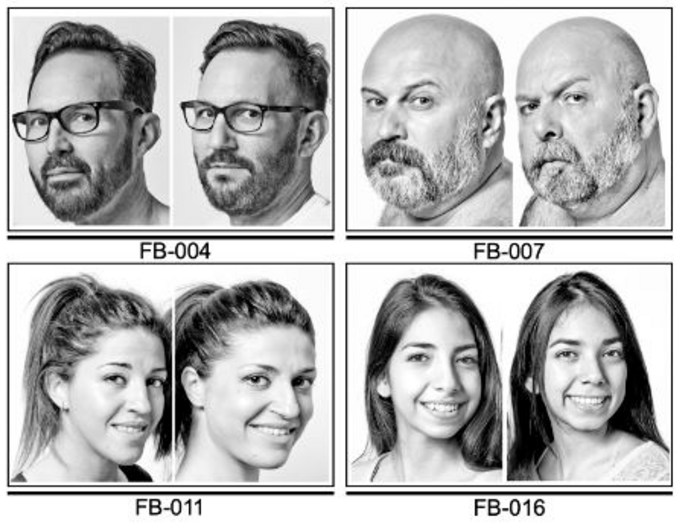DNA analysis and a collection of photographs of genetically unrelated lookalikes have shown that strong facial likeness is tied to shared genetic variations. The article is published in Cell Reports on August 23rd, 2022.
 Photographic examples of LALs used in this study. Image Credit: François Brunelle
Photographic examples of LALs used in this study. Image Credit: François Brunelle
Our study provides a rare insight into human likeness by showing that people with extreme lookalike faces share common genotypes, whereas they are discordant at the epigenome and microbiome levels. Genomics clusters them together, and the rest sets them apart.”
Manel Esteller, Study Senior Author, Josep Carreras Leukaemia Research Institute
The growth of the World Wide Web and the ability to share human images globally have led to a rise in the number of genetically unrelated individuals who have been recognized online as virtual twins or doubles. Esteller and his team’s goal in the new study was to characterize random people with objectively similar face traits on a molecular level.
They did this by enlisting human impersonators from the photographs taken by Canadian photographer François Brunelle, who has been capturing images of lookalikes all over the world since 1999. 32 identical couples’ headshot photos were gathered.
By comparing the results of three different facial recognition systems, the researchers came up with an objective measure of resemblance for the couples.
The subjects also submitted saliva DNA for multiomics analysis and completed a thorough biometric and lifestyle questionnaire.
Esteller added, “This unique set of samples has allowed us to study how genomics, epigenomics, and microbiomics can contribute to human resemblance.”
Essentially, the findings showed that although these people had comparable genotypes, they have different DNA methylation and microbial landscapes. All three methods grouped together half of the lookalike couples. Based on 19,277 common single-nucleotide polymorphisms, genetic study of these 16 couples showed that nine of them grouped.
Additionally, there was a correlation between lookalike pairs of physical characteristics like height and weight as well as behavioral characteristics like smoking and education. Together, the findings imply that shared genetic variation could affect common habits and behavior in addition to similar physical appearance.
“We provided a unique insight into the molecular characteristics that potentially influence the construction of the human face. We suggest that these same determinants correlate with both physical and behavioral attributes that constitute human beings,” stated Esteller.
The small sample size, the use of 2D black-and-white photographs, and the predominance of individuals from Europe are a few study drawbacks. Despite these limitations, the research could offer a molecular foundation for upcoming applications in a number of disciplines, including forensics, evolution, and healthcare.
Esteller further added, “These results will have future implications in forensic medicine—reconstructing the criminal's face from DNA—and in genetic diagnosis—the photo of the patient's face will already give you clues as to which genome he or she has.”
“Through collaborative efforts, the ultimate challenge would be to predict the human face structure based on the individual’s multiomics landscape,” concluded Esteller.
Source:
Journal reference:
Joshi, R. S, et al (2022) Look-alike humans identified by facial recognition algorithms show genetic similarities. Cell Reports. doi:10.1016/j.celrep.2022.111257